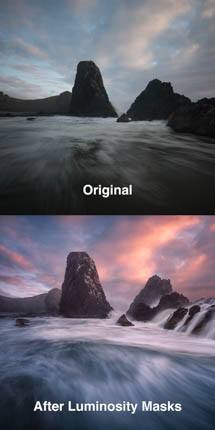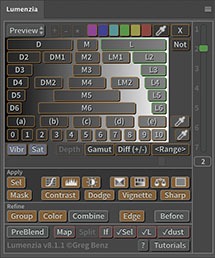Adobe just released Lightroom CC. It has bunch of new features (faster processing, facial recognition, panoramas, etc), but I want to call out in particular that I think readers of this blog will really enjoy: HDR! Photoshop has been a great tool for photo-realistic HDR for years, but the new “HDR Photo Merge” tool in Lightroom is a dramatic improvement. Compared to the old approach, Lightroom HDR offers:
- Much smaller HDR files: 12 times smaller! This alone is a game changer. With the smaller files, it’s much easier to use a truly non-destructive workflow so that you can make changes later (with Photoshop HDR, I typically convert to 16-bit when I’m done, which means I lose the ability to do further editing later in ACR). And Lightroom’s developing capabilities have gotten much better over the years, so keeping the original could likely mean that you can easily update and improve your HDR in the future as Lightroom continues to get more powerful.
- Much faster: The merging process is 2-3 times faster! For example, in my testing, a three-exposure merge took 51 seconds in Lightroom versus 138 in Photoshop CC 2014.2. I’ll take back that minute and a half gladly, and you’ll save even more time if you’re merging five to nine exposures.
- Much simpler: Once you’ve done the merge (which really only has two simple choices: alignment and de-ghosting), you then edit exactly the same way you would edit any other DNG file straight out of the camera.
Note that the ACR 9 update for Photoshop enables these same DNG updates, but I find the workflow is overall much easier in Lightroom.
Here’s how it works:
- Don’t bother making any changes to the original DNG files before merging.
- Select the files you want to merge (if they are in a stack, you can select the stack without expanding it).
- Right-click and choose Photo Merge / HDR.
-Alternatively, use the keyboard shortcut -H. (note that Mac users should actually use the “Control”, not the “Command” key).
-Or, you can use the shortcut –H to skip the merge options and process your selection with the same settings you used on the last HDR. This can be a nice time saver if you have multiple HDRs that should use the same settings. - Choose merge options:
– Turn on “auto-align” if you shot handheld or don’t have perfect alignment of the images.
– You can either use or skip “auto-tone”; it does exactly the same thing as the “auto” button in the basic panel when you later develop the HDR.
– Lastly, choose a level of de-ghosting. I generally recommend using “None”. If you do use it, I recommend leaving the deghost overlay on to help check for any problems. - Use the develop module to edit the merged file (you’ll see a new DNG file that has “HDR” in the name). The editing process at this point is exactly the same as what you’d use on any regular image.
- You can then export as an 8 or 16 bit image to finish post-processing with additional software if you wish. Just as I did with HDR in Photoshop, I often use the HDR process to deal with initial color and contrast. Once I’ve done that, I finish processing using Lumenzia and/or the Nik plugins in Photoshop.
Where does it fit into my workflow? I’ve been using both HDR and luminosity masks for a long time (see this post post on when I use which approach). Mostly, it’s a huge time-saver for situations where I was already doing HDR (and it will give me more options to work non-destructively). But I expect I may use Lightroom HDR in some situations where I may have previously just jumped straight to luminosity masking on a single exposure (ie, situations where the image didn’t call for the extra work of manual exposure blending, but now I can give myself a better starting point for further editing).
Are there any downsides to HDR in Lightroom vs Photoshop? Nothing notable in my experience, but it is designed to do all the HDR work inside Lightroom. Adobe has created a new DNG file format for Lightroom. It can’t be exported to Photoshop as a 32-bit image (neither DNG nor TIF) and the DNG isn’t compatible with other tone-mapping software like Photomatix. So if you were previously using Photoshop just to merge and then exporting to tone-mapping in another software program, you should continue to use Photoshop.

